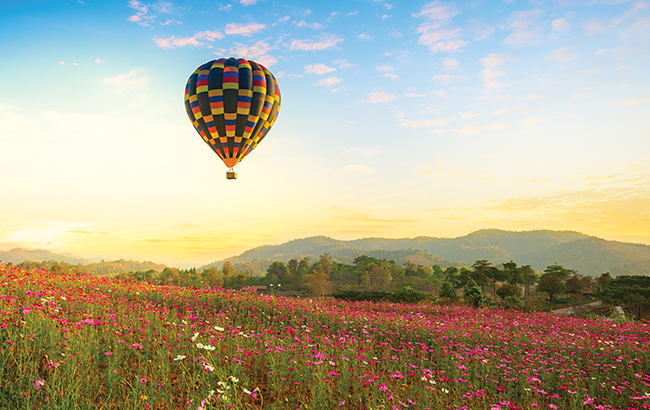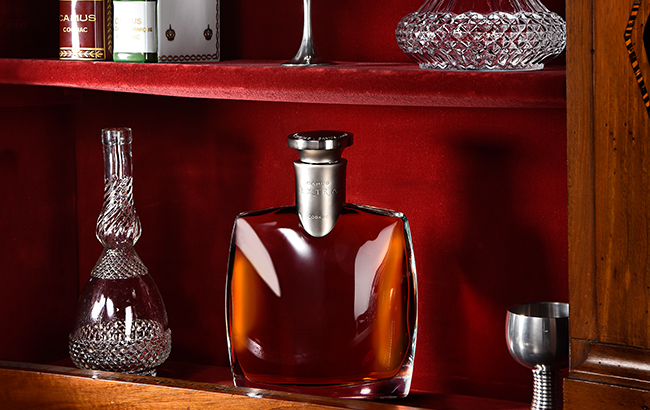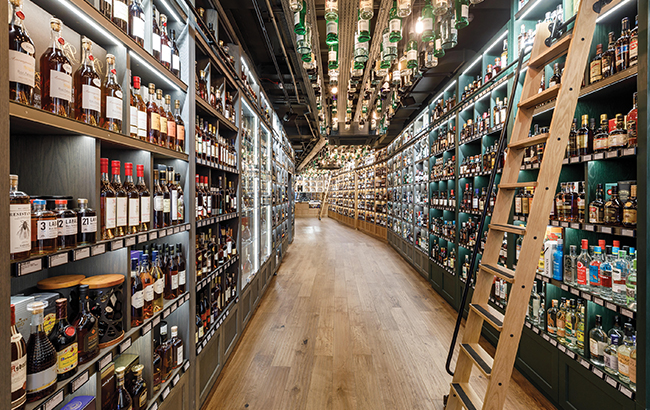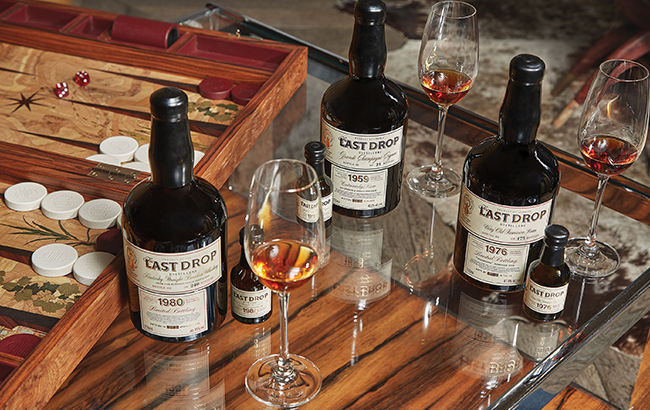Can emerging categories crack the luxury market?
High-end spirits were outgrowing lower-end counterparts at the start of 2020, with emerging categories forecast to soar. Amid the pandemic, has their success been thwarted?

*This feature was originally published in the October 2020 issue of The Spirits Business
The world of luxury spirits has become known for its ultra‐ premium price tags and quality liquid, which can often be made with some of the rarest and oldest stock available. Interest in the category has swelled in recent years and spilled over into the secondary market where revered single malts and distilleries’ inaugural releases have set auction records.
But in 2020 came Covid‐19, which has affected every major market worldwide. Consumers stockpiled food, hand sanitiser and toilet paper as regular shopping habits ground to a halt. As countries introduced national lockdowns, both on‐ and off‐trade premises were temporarily closed. The change of circumstances appears to have prompted consumers to trade up to premium spirits for at‐home consumption, as data from Nielsen showed.
Nielsen noted that from the week ending 23 May to the week ending 12 September 2020, one consistent characteristic of US off‐trade alcohol has been the acceleration of premiumisation. Consumers shifted the dollars they would have spent in bars on alcohol to buying high‐end spirits in the off‐ trade. Nielsen found that ultra‐premium and premium price tiers accounted for 80% of total spirits dollar growth in the US off‐trade, with ultra‐premium spirits rising by 54.3% during the period.
On whether demand for luxury spirits has fallen in the current crisis, Rebecca Jago, managing director of The Last Drop Distillers, says: “Many people might speculate no. There are still people buying luxury spirits, particularly those who are very wealthy.”
However, Pier Paolo Catucci, global brand manager for Cognac brand Camus, notes that consumers tend to stop spending on products deemed luxurious during an economic crisis. He says: “The tough thing is that extravagance is the first thing that people cut. It varies from country to country, but from a macroeconomic view there is a general concern about spending disposable income.”
A study conducted by the IWSR Drinks Market Analysis before the pandemic showed that ‘status’ spirits (brands retailing for US$100 or more) are growing faster than the total spirits market.
The IWSR’s Status Spirits Strategic Study showed the value of the status spirits market (excluding baijiu) was worth US$8.3 billion, and grew at a compound annual growth rate (CAGR) of 7% from 2014 to 2018. In comparison, the total global spirits market grew by 2% value CAGR. The segment of brands that sell for US$100 and more “historically tends to be resistant to economic uncertainty”, the IWSR noted. Consumers buying spirits over US$1,000 are often buying them for the long term and as an investment, according to Emily Neill, chief operations officer, research and operations for IWSR.

ROUTES ARE CLOSED
Neill says the routes to market for luxury spirits have been shut down, citing the closure of on‐trade venues such as high‐end hotels and Michelin‐starred restaurants, specialist alcohol stores and also the duty free channel.
“While consumers are feeling the pinch, the first consideration is the channels that they sell through have been greatly reduced,” explains Neill. “That has had the biggest impact. If you look at the whole status spirits market, above US$100, and take out baijiu in China, mainly looking at Cognac, China is a third of the market and global travel retail is a third. Duty free is basically Cognac and Scotch. Luxury spirits has seen a greater downturn than the rest of the spirits market, partly offset by e‐commerce.
“E‐commerce for alcohol is still banned in some markets, such as Russia. Other markets would have compensated a bit, but there aren’t many markets that are more than 10% of consumption. The US has been one of the most resilient.”
Rare spirits bottler The Last Drop Distillers, which is distributed in the US through its owner Sazerac, has seen “continued interest” in the US market and for its upcoming releases, Jago says. However, she says that China is “very challenging” and that the biggest downturn is duty free. “People are behaving very differently through the pandemic,” adds Jago. “They are travelling with a different sense of purpose. No one is stopping to buy or taste.”
RETAIL IS ‘DEAD’
The drop in footfall in physical stores has hugely affected the sales of luxury spirits as consumers stopped browsing to limit their time indoors, and were unable to try samples. Jago says: “In terms of retail it is absolutely dead. Our retail customers are seeing barely any traffic.” She added that “quite a lot of luxury spirits sales are based on tourism”.
Neill notes that the pandemic hasn’t allowed people to shop in the way they usually do and for as long, which has led to consumers returning to the brands they know. “Some higher‐end specialist shops may have taken longer to open and are limited in terms of how they operate,” explains Neill. “That hinders the purchasing opportunities.”
Dawn Davies, head buyer at specialist alcohol retailer The Whisky Exchange, which operates an online shop and three physical stores in London, says the company is still seeing demand for luxury spirits. However, the drop in tourism has also hurt the company’s in‐store sales, Davies adds.
She says: “People are uncertain at the moment, so when they’re looking at spending, they have to look at if it will help in some way. In stores we are still seeing some strong sales of luxury, but not as strong as we used to because of the lack of tourists. Not having the tourism industry is denting bricks and mortar stores because the tourist is so key in the luxury market.” The company has reopened all of its stores except for its Covent Garden outlet.
Davies is also being more tentative when it comes to choosing products to sell in The Whisky Exchange, and says new high‐end brands must also offer entry‐level products to gain customers.
“One thing I’m saying to brands is you need a [price] ladder,” she says. “When you’re coming in at a price point, unless you have the most amazing story or great packaging, it’s hard to get people in that category. Why would I buy it if I don’t know what it tastes like? It’s really important to get a brand to have lower‐priced products.”
Neill notes that some brands are “trying to develop more accessible products”, pointing to the example of Johnnie Walker’s Game of Thrones‐inspired bottlings as a way for the brand to “engage with the younger consumer”.

Catucci adds that recognised brands are performing well during the pandemic because they are “reassuring for consumers”. He says: “Launching a new brand or new product in this time could be challenging.”
The IWSR’s Status Spirits Strategic Study noted that the growth of status spirits is expected to be much faster in less developed categories such as American and Irish whiskey, Tequila and rum. Neill singles out Tequila and American whiskey as growing quite quickly at the higher end. She notes that some of the less developed categories are building their high‐end ranges and are looking to increase their value.
“Brands have seen what Scotch and Cognac producers have done and are extending their lines to include products above US$100. This helps to improve and build the profile of the brand,” explains Neill, citing The Macallan as the prime whisky example, with products often selling for thousands of dollars. “Where the majority of The Macallan’s revenue comes from is well below that price but what it does is build the brand image and benefit the rest of the products across the range.”
While the Status Spirits Strategic Study was published in March, the IWSR has since forecast that the spirits market will not return to pre‐crisis levels until 2023/24. Neill says: “The underlying trend is likely to continue but it’s possible some of these categories, particularly in the US where e‐commerce is growing fast, might bounce back quicker.”
At The Whisky Exchange, Davies says that sales of luxury whisky are strong as consumers continue to buy limited edition products, while high‐end rum is benefiting from premiumisation. However, she notes a drop in sales of gin brands over £35 (US$44), which could be down to “gin fatigue”. Davies says: “People are becoming more experimental in certain categories with different brands but I do wonder if that top end of the market is mostly made up of the ones that consumers are familiar with.”
SHIFT TO E-COMMERCE
To overcome the impact of Covid‐19 on the sector, luxury brands and retailers are turning to online sales and banking on a resurgence in the Chinese market. The rapid growth of e‐commerce, following the closure of traditional channels, has the potential to have a deep and long‐lasting democratising effect on luxury spirits.
To attract new consumers, Neill says brands and retailers must become “more flexible and innovative”, and create opportunities for sampling and tasting digitally. She explains: “If someone’s going to invest in a bottle for £250, they might want an idea of what it’s going to taste like.” She notes that brands should consider offering products in smaller bottles.

Since March, The Last Drop Distillers has been offering consumers plenty of opportunities to taste its products amid the coronavirus restrictions, Jago says. Every bottle that The Last Drop sells comes with a miniature of the same product. Jago says: “We made a decision to be more generous with the liquid. We’ve done quite a lot of one‐to‐one tastings on Zoom.” Jago hopes to offer an online tasting programme in the future.
During the pandemic, brands have upped their focus on digital connections, and sought to replicate the personalised shopping experience online. Catucci believes shopping has changed. The brand’s Atelier Camus, a workshop that hosts VIP guests and consumers and allows them to customise a product, has also been developed into an online format.
Neill predicts that online sales will gain share of luxury spirits. She says: “E‐commerce will get a greater share of total sales than bricks and mortar stores, a lot of the sales growth will come through the channel. E‐commerce in the US has grown very fast where some regulations have been relaxed. In other markets, such as the UK and China, and Japan, possibly, you would have had e‐commerce offsetting and picking up some of the slack.”
NEW LUXURY SPIRITS
The pandemic has not hindered new luxury products from entering the market. The past six months have seen a number of companies, particularly in Scotch, unveil their latest high‐end bottlings. Diageo unveiled its annual Special Releases collection, comprising Scotch whiskies priced from anywhere between £90 and £500, and launched Prima & Ultima, a series of collectable single malt Scotch whiskies with a combined RRP of £20,000. Set number one of the series recently sold for £26,840 during an auction at Sotheby’s.
The Last Drop will also release its new Autumn Collection in November, comprising three very limited products: an aged 1980 Bourbon, a 43‐year‐old rum and a Cognac from 1959. The company is also planning a brand overhaul for next year to “bring the brand up to date”, says Jago.
Davies believes brands should be mindful of releasing products at a high price point in the current landscape and should reconsider their strategy. She says: “The one thing that is irresponsible is to sell ultra‐premium products; it’s sending the wrong message out there and coming at a time when money is tight for people.
“Launching things in the hundreds of thousands is not the right thing. They should delay until things go back to ‘normal’. Brands should be conscious about what they’re selling to the world. What we’re seeing now is brands creating products that are not worthy of the price point. Brands need to look long and hard into their strategy especially with the climate now and when they’re launching.”
